CW’s latest money-bagger, The Flash embraced an epic finale to its successful first season spanning across 23 episodes. (Spoilers Alert) The much awaited finale (Fast Enough) to the Scarlet Speedster’s saga lived up to the fans’ expectations (rated 9.8/10 on IMDB) played up with a lot of emotional content, tying up some untold character arcs and finally wrapping up with a save-the-world type of climax for our favorite superhero. With amazing scientific concepts of worm-holes and black holes woven into the plot involving Barry breaking into the speed-force and travelling back into time and also finally unraveling the Reverse Flash’s motive along with several Easter Eggs for the second season, ‘Fast Enough’ wrapped CW’s top show at a consistent peak with 3.87 million viewership (slightly lesser than last week’s crossover episode, ‘Rogue Air’).
Zooming past CW’s pioneering superhero show (read Arrow) to take the number one position, The Flash has won over the masses and without doubt the second season has been green lit for a fall premiere. With some crazy numbers and rankings backing it up, The Flash is CW’s most watched TV show over the past 7 years. The pilot episode itself garnered a total of 6.8 million viewers making it The CW’s most-watched telecast and the highest-rated premiere among men 18-34 (2.5 rating) according to Nielsen. Even critically, The Flash has earned brilliant reviews especially on the acting front from the star performer and antagonist, Tom Cavanagh starring as Dr. Harrison Wells AKA The Revere Flash. Rated 8.3/10 on IMDB and reporting a 96 per cent approval rating on Rotten Tomatoes.
So we at AnimationXpress.com break down the success formula of CW’s The Flash and list top 10 reasons (it’s subjective of course) why the show rules the small screen comic-superhero genre.
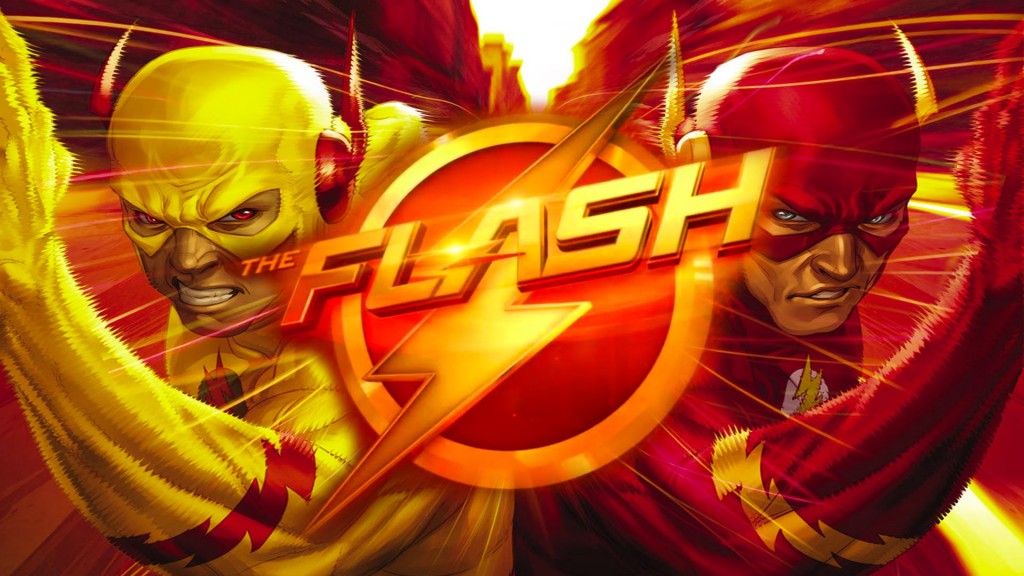
Adapting DC Comics’ iconic Speedster: Created by writer Gardner Fox and artist Harry Lampert in 1940, DC’s third most recognisable superhero (after Batman and Superman), The Flash as Jay Garrick reigned the Golden Age of comics. The speedster was also the first comic superhero to undergo a total reboot in 1956 signaling the advent of the Silver Age with Barry Allen’s incarnation of the Flash, the superhero CW has adapted on the small screen. After two successful seasons of Arrow adapting the comic hero Green Arrow from DC comics, CW got struck by the lightning bolt called The Flash.
Brining in a mainstream DC character into the live-action space that has not quite made a mark on the big screen was both a risk and an opportunity but one that has neatly paid off for the network with a stellar first season. With The Flash, CW also has the advantage of adapting multiple storylines and feed the masses a real treat with the Scarlet Speedster’s adventures. This granted the show’s writers Greg Berlanti, Andrew Kreisberg and Geoff Johns the liberty to play around with a vast array of comic story lines and characters. CW’s Flash, Grant Gustin has already hinted that the second season would depict multiple universes, something the Flash comics have successfully pulled off in the comic strips over the ages.
Honest page to screen comic adaptation: Hats off to CW’s bold move of adapting a DC’s mainstream superhero on the small screen, but what hits the nail for The Flash’s success with the fans is the honest page-to-screen adaptation of the comic speedster. The campy comic bookish appeal feels totally lifted off the comic strips. As a matter of fact, The Flash has proven, not every successful DC comic adaptation need not drown itself in the Dark Knight kind-off grittiness, something that has always worked out for the comic publisher. Even CW’s Arrow follows those dark and grim threads, something The Flash clearly didn’t with its light-hearted humor and Grant’s bumbling innocent nature.
The other thing that CW got it right was the Scarlet Speedster’s costume which to everyone’s delight is the highlight. After 12 episodes of Marvel’s Daredevil on Netflix, the blind crime-fighter’s costume only revealed how ludicrous Charlie Cox looked donning the scarlet-padded suit. Whereas DC takes a clear lead here with the perfect blend of the comic appeal to the Flash’s suit coupled with the scientific practicality Cisco (The Flash’s sidekick) designed for him. Not only does the hero get a right comic costume in the show, but the horde of super-villains too have donned some of the craziest costumes, each underlining the powers and characteristics of the wearer.
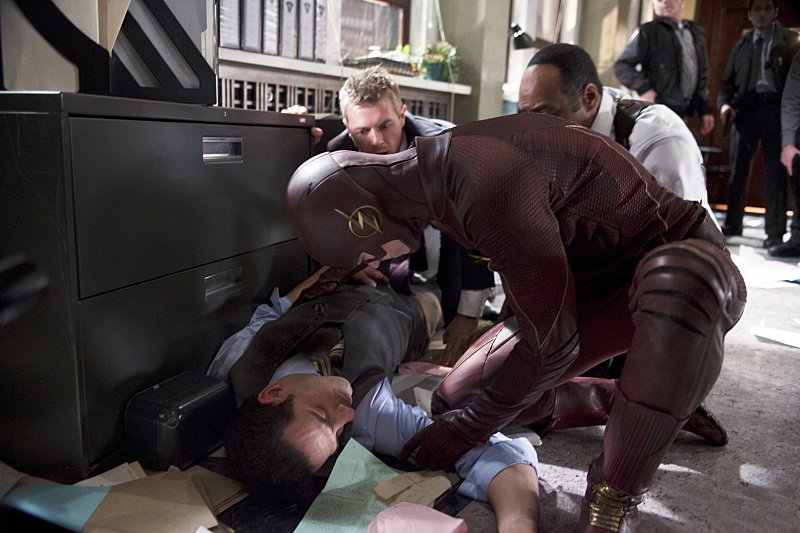
Crisp Story-telling: Marvel’s Agents of S.H.I.E.L.D struggled throughout its first season mostly because it fed on the tidbits of the big screen Marvel movies. Another bummer for the show was stretching a grand plot throughout the season. On the other hand, CW’s The Flash started a different genesis for the genre. The writers kept every episode crisp and by in-itself an adventure for the scarlet speedster but all along holding the strings to the main antagonist, Tom Cavanagh’s Reverse Flash. The effective approach of one-episode crisp story telling format didn’t allow our superhero to shy away from displaying his speedy tricks and powers. This surely kick-started the season’s success and brings us to the next reason which allowed the writers to introduce a handsome dosage of super villains in the stellar season.
Introducing a host of super-villains: The makers of The Flash understood it well, that no superhero is complete without a powerful Super villain. CW had got that right with the first two seasons of Arrow, while the third does have Ra’s Al Ghul as the main antagonist, yet the appeal remains mixed for the third staggering season. The Flash on the other hand dug graciously into DC’s kitty of baddies and depicted some great super-villains with Cisco’s whacky names for each of them. Apart from the Flash’s nemesis, Reverse Flash, other notable villains included Captain Cold, Heat Wave, Multiplex, Captain Boomerang, The Mist, The Trickster, Rainbow Raider, Peek-a-boo, Doctor Light, Weather Wizard and of course the psychic CGI- Gorilla Grodd are among those who gave our scarlet speedster a hands full to deal with throughout the first season.
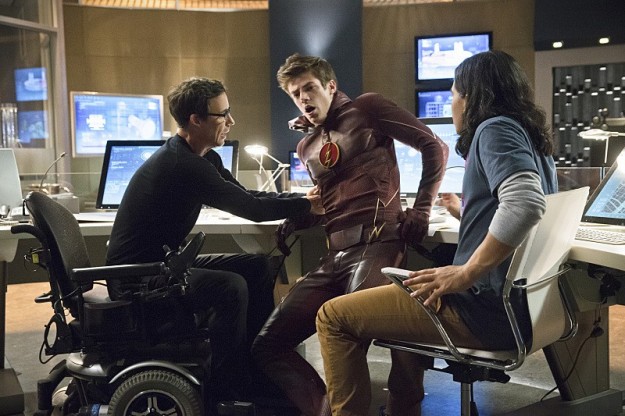
Light-hearted tone: In the first season itself, The Flash dumped more villains to on the screen than what Arrow managed in three of its seasons and yet the speedster’s saga still managed to keep a light-hearted tone to the show unlike its counter-part, Arrow. Although critics applauded Daredevil’s dark and gritty tone which Marvel adopted for its latest small screen outing, the same needn’t be the success mantra for the superhero genre. DC Comics’ Batmanish-grim approach to superhero adaptations was totally shattered with The Flash. Grant Gustin’s charming and bumbling innocence lent to the speedster kept the show afloat from drowning into the darker facets of the comic and it’s not just the superhero, but the super-villains too with greyer characteristics that helped keep the dark and gruesomeness at bay.
Great character development: One of the key reasons why audiences embraced The Flash was that the show fearlessly attacked the plot points underlining strong character arcs. Apart from the titular character, Barry Allen’s story, the show revolved gloriously around the supporting cast too, although Iris West (Candice Patton) deserved a tad bit more than merely being Barry’s love interest. While the entire season did broadly circle around Barry’s relentless endeavors to find his Mom’s killer – ‘The Man in Yellow’, every episode threw light on different directions. Barry’s each confrontation with the meta-humans boasted his kind-hearted and righteousness. The episode ‘Rogue Air’ centers on Barry’s hell-bent mission of saving the meta-humans who he fought off all during the entire season leading our good-natured hero to bestow trust in the Star City criminal Captain Cold aka Lenoard Snart (Wentworth Miller) which unsurprisingly backfires for the Speedster.
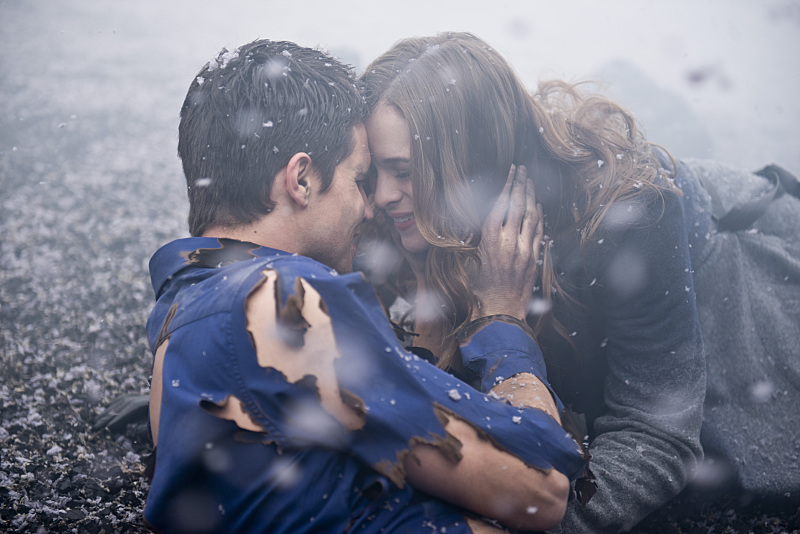
Amazingly depicted on-screen chemistry: Given the writers gave the opportunity to display some exciting performances for The Flash, the on-screen chemistry of the characters just seemed to be a by-product and very seamless. From Barry’s attraction towards Iris to the playful father-son relationship between Barry and Detective Joe to the heart-felt emotional talks between Barry and his imprisoned father, season one just played along well with the character’s chemistry. Tom Cavangh’s inspirational persona of Barry’s well-wisher as Harrison Wells sparked the light into every episode where Barry saw Harrison as a father-figure only until he unravels the truth about him.
Even the finale, ‘Fast Enough’ wrapped up the tensed relationship between the Flash and the Reverse Flash brilliantly. The episode, ‘Rogue Time’ where Flash accidently races back into time delved deeper not just into the chemistry between Iris West and Barry Allen (Yes, we have Barry’s first kiss with Iris here) but also the father-son relationship between Barry and Detective Joe which has proven to be one of the strongest points of the show. Every conversation between the duo was heart-warming and added more of the lighter tone of the show.
Impressive use of visual effects: No superhero show is complete without judiciously executed action-sequences and The Flash scores just the right number there. With the speedster zooming in at lightning speeds, the makers had to resort to speed-ramping technique which depicts our hero thrashing the baddies in extreme slow motion sequences. These visually arresting scenes coupled with great choreography notched up the stakes for the small screen show, The Flash.
Fans would perhaps at times miss the hand-to-hand combat action, one that Arrow brings in but the red streak does make up for it. Speaking of visual effects, The Flash pulled off an impressive job in the episode, ‘Grodd Lives’ unraveling the giant super-smart psychic Gorilla. Displaying some high production costs, the CGI Grodd does convince us in giving the fearless Joe shivers down his spine.
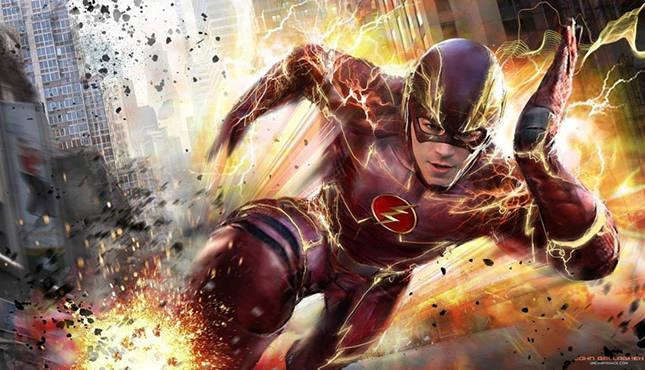
Grand finale: Another facet where Marvel’s Daredevil fails to overtake DC’s scarlet speedster is the finale episode which in Daredevil’s seems a clumsy wrap-up to an extremely well-written plot. The Flash on the other hand builds the right amount of tension as the season boils down to a tear-jerking finale which also teases us with various Easter Eggs, including the first look at Caitlin Snow’s Killer Frost, then throwing in (literally) Jay Garrick’s Flash helmet and also a look at the Flash Museum.
Apart from these Speed Force glimpses, we also have a teasing story arc for Cisco who could take on the role of DC’s comic character, The Vibe. The Finale does have a casualty too from the good side but what was indeed heart-wrenching was Barry’s only and last interaction with his dying mom, something that Grant Gustin played along exceptionally well. Finally the epic finale ends with the Scarlet speedster racing on in the save-the-world kind of climax. Truly an amazing wrap up!
Playing by the success formula: Although Marvel may be leading the race on the big screens, however The Flash totally wins it for the DC Comics on the small screen space; with a right amount of light-hearted humor in the tone, coupled with stellar performances from all the star-cast (special mention of Tom Cavangh here) and pleasing visuals, CW concocted the perfect formula for a mega successful superhero show, one that wins The Flash, the Best Superhero TV Show.
Grant Gustin as the Flash has clearly made his mark and critics and fans are nervous about whether Ezra Miller would pull off as convincingly as Grant in DC’s big screen venture for the Scarlet Speedster that hits theatres in 2018. Also leading to a perfectly pushed season two, CW has a large think tank of ideas it could exploit from the Flash comics especially when the finale so closely flirted with one of the iconic story lines of the Flash, The Flashpoint Paradox. Continuing to play by this success formula, CW’s The Flash might continue its reign in the small screen space in the coming season as well.
Run, Barry, Run!
